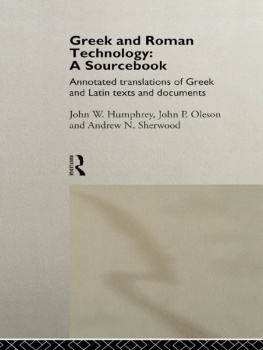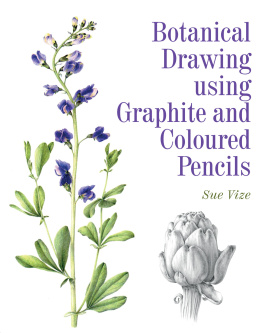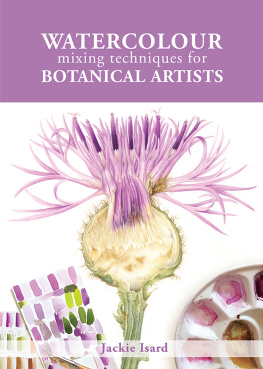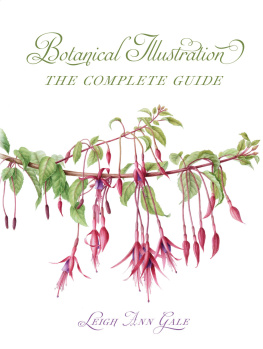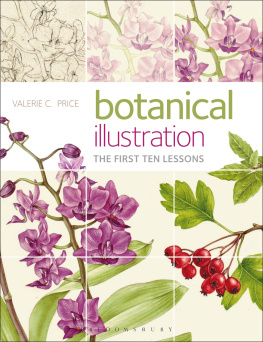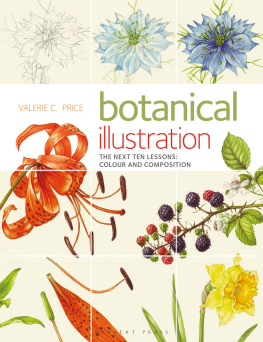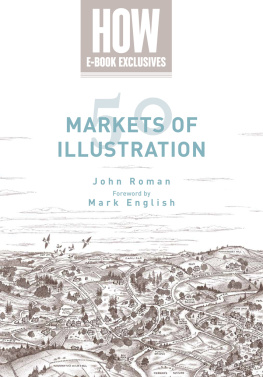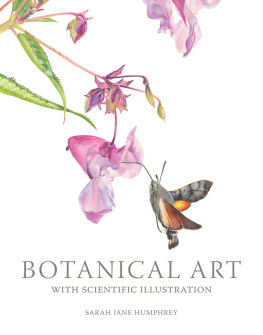BOTANICAL ART
WITH SCIENTIFIC ILLUSTRATION
BOTANICAL ART
WITH SCIENTIFIC ILLUSTRATION
SARAH JANE HUMPHREY

THE CROWOOD PRESS
First published in 2018 by
The Crowood Press Ltd
Ramsbury, Marlborough
Wiltshire SN8 2HR
www.crowood.com
This e-book first published in 2018
Sarah Jane Humphrey 2018
All rights reserved. This e-book is copyright material and must not be copied, reproduced, transferred, distributed, leased, licensed or publicly performed or used in any way except as specifically permitted in writing by the publishers, as allowed under the terms and conditions under which it was purchased or as strictly permitted by applicable copyright law. Any unauthorised distribution or use of thistext may be a direct infringement of the authors and publishers rights, and those responsible may be liable in law accordingly.
British Library Cataloguing-in-Publication Data
A catalogue record for this book is available from the British Library.
ISBN 978 1 78500 420 9
Frontispiece: Oyster Mushroom Beetle, Triplax lacordairii.
Acknowledgements
With thanks to my three incredible children, Harvey, Freddy and Isla, I hope to inspire you to pursue your dreams, and make great choices in life. Jon, thank you for giving me the freedom to be creative and curious, and sharing some of my adventures, there will be many more to come. Mum, Dad and Ed, an inspirational childhood, flooded with the perfect balance of nurturing with an uninhibited laissez-faire to explore this wonderful planet we live on.
Contents
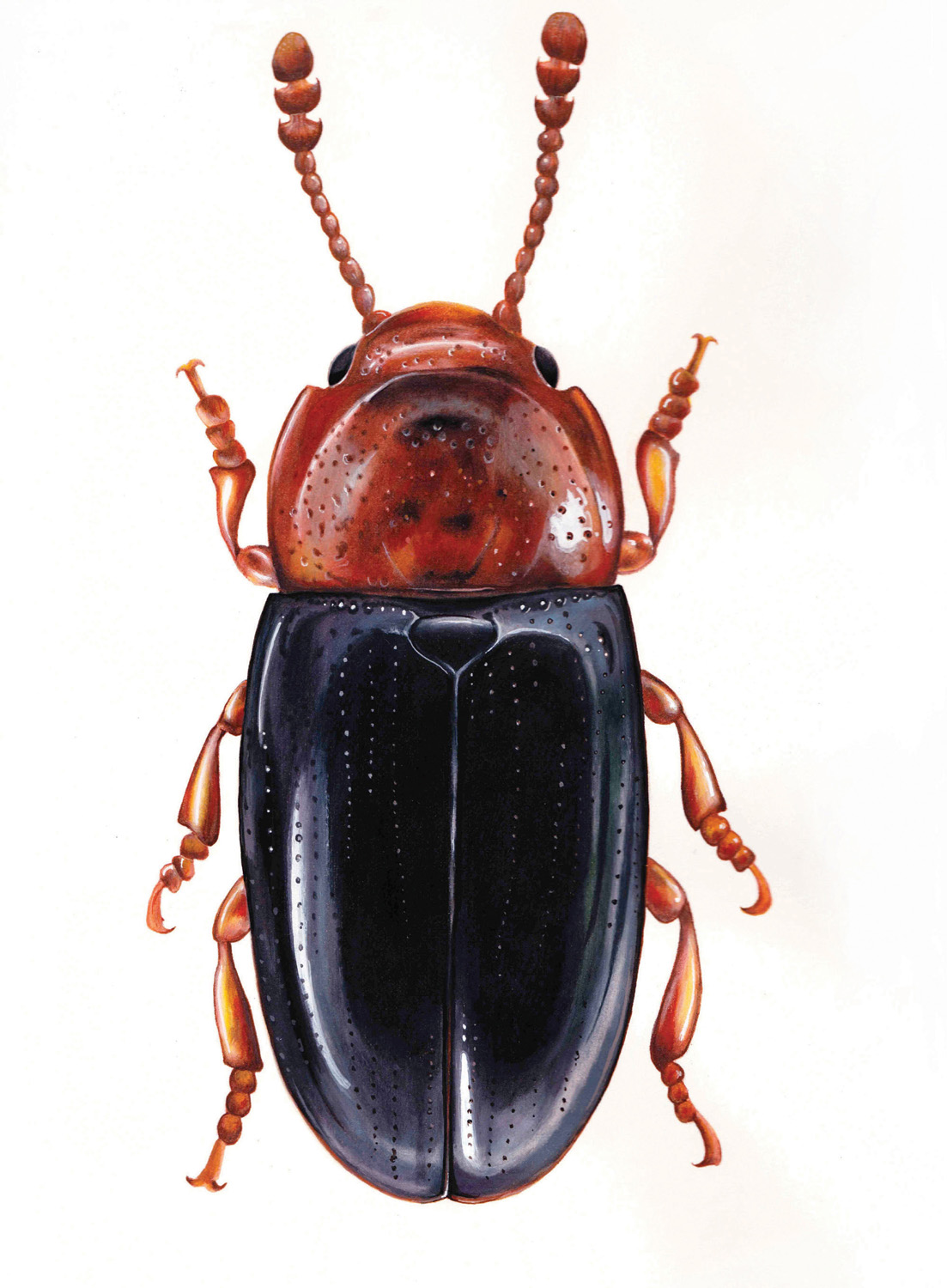
Introduction
Born in Bedford 1977 and later moving to Cambridgeshire, I grew up living close to the embankment of the River Great Ouse, and enjoyed a childhood dipping in and out of rivers and streams, surrounded by nature. At around the age of two, my parents bought me a painting easel, which over endless summers was propped up in the garden, nestled in between the flowers and vegetable patch. Looking back, this is quite possibly where my passion for drawing naturally derived subjects began, and an eye for detail emerged. From the moment I could hold a pencil I was always drawing or writing.

Sarah Jane Humphrey in the studio.
Growing up in Cambridgeshire influenced my artworks. Here I was surrounded by nature, with a flourishing collection of butterflies and other curious insects, leaves and flowers all of which were fascinating subjects to draw. A common theme that runs strongly throughout my artwork is the attention to details. As I grew older I was finding new techniques to sharpen my accuracy and observational skills. On leaving school (much to my teachers despair for not furthering my studies in literature and languages) I decided to pursue my artistic passion and follow my dreams which at sixteen were strongly rooted in fashion design and, as it would turn out, floral drawings and began a Diploma in Technical Illustration.
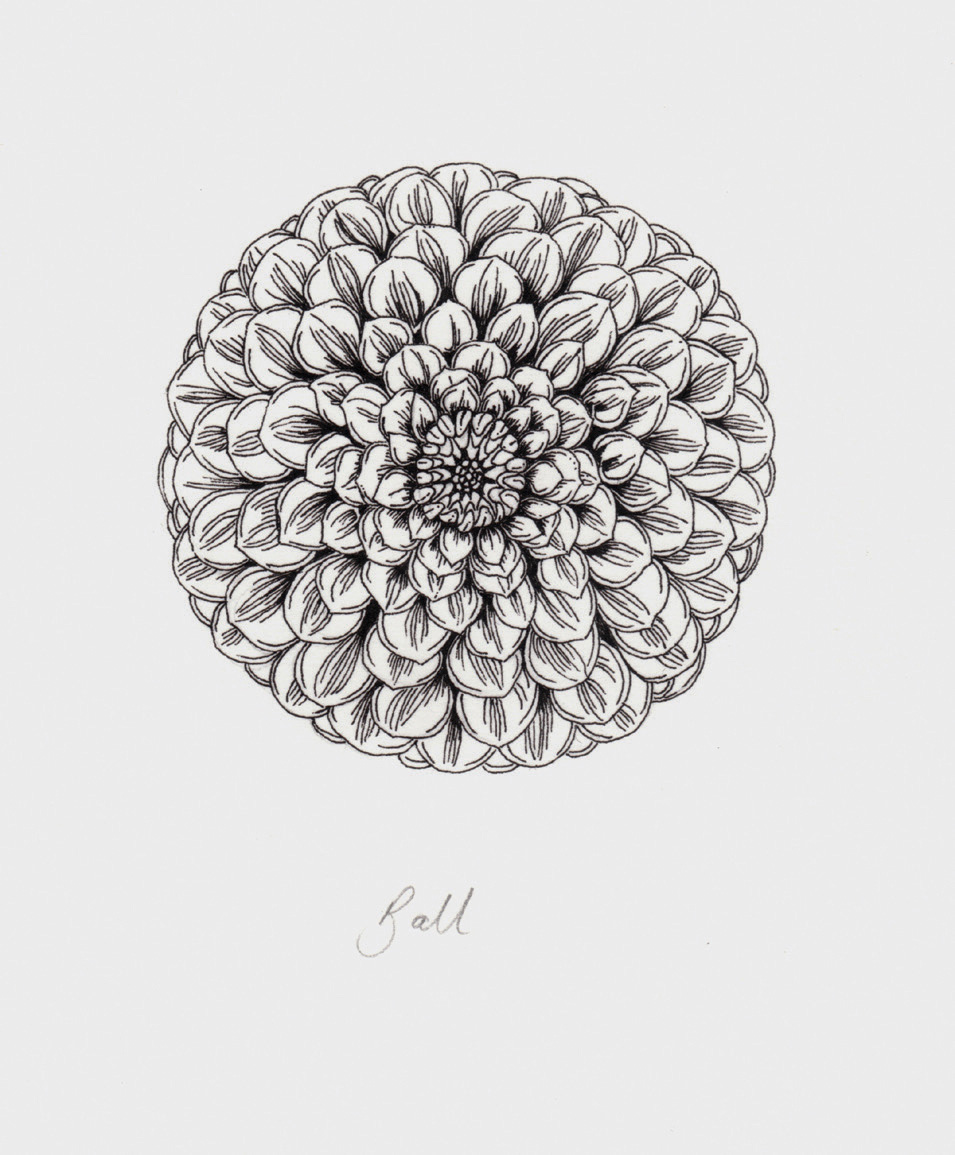
Dahlia Ball line illustration. Commissioned by the Eden Project, for the Dahlia Garden.
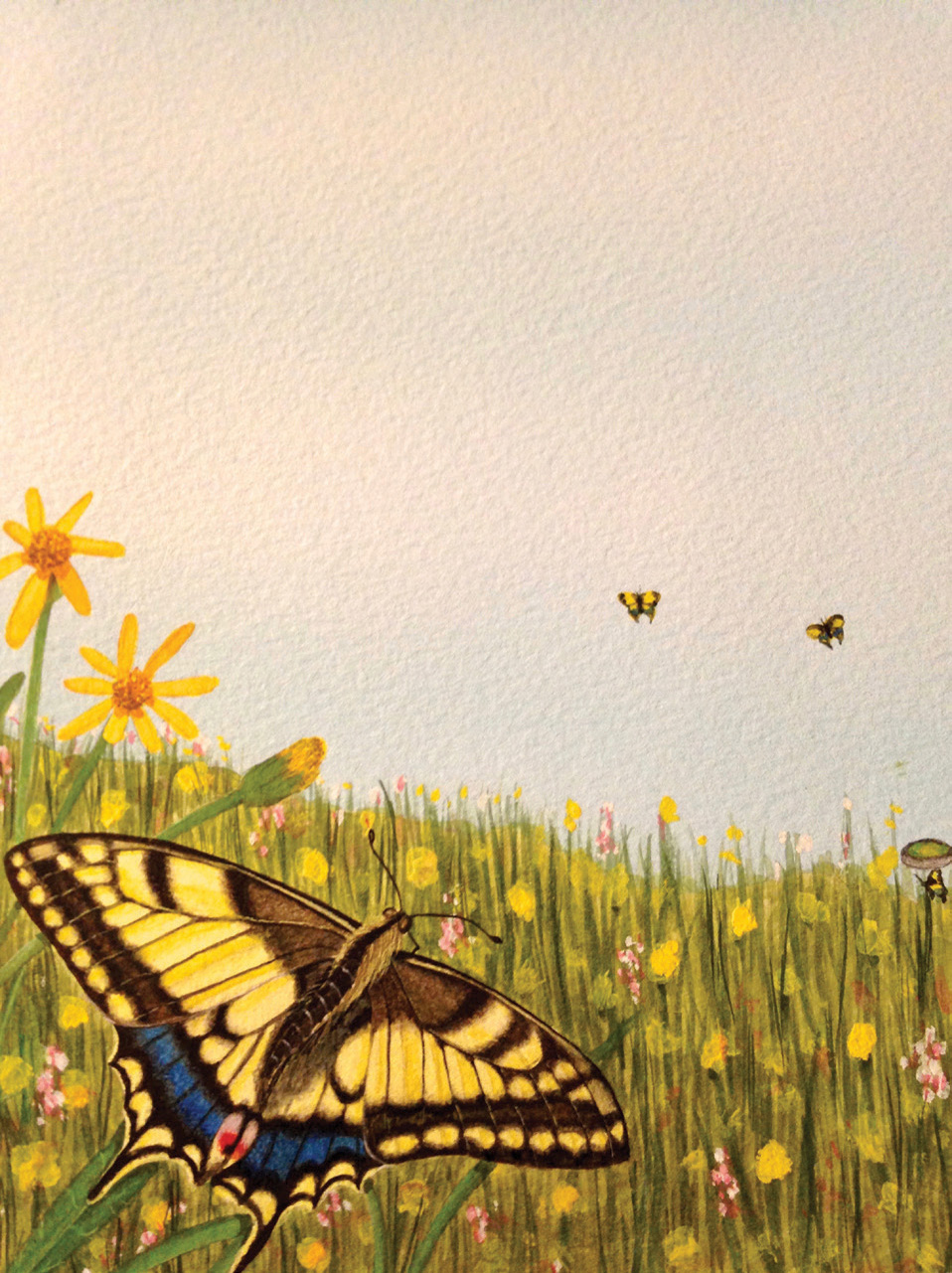
Details from the life-cycle study of the Swallowtail, Papilionidae family.
I was swiftly introduced into a world of exploded illustrations of gear-boxes, perspective grids and Rotring pens. (The nibs on these pens incidentally, were as minute as one tenth of a millimetre, so you can imagine the accuracy and perfection.) This was a far cry from my previous drawing concepts, and a challenging course, but it was a marvellous education and offered a disciplined approach to learning about structures and dimensions, which is an intrinsic part of botanical and scientific illustration.
Some varieties of the dahlia, for example, have an invisible structure almost like a geodesic dome, with petals extending from this in a perfectly geometric form. It is having knowledge of these underlying structures that really aids the drawing process, much as the great Masters studied anatomy to have a clear comprehension of the human form. Grasping the concept of muscle and bone configuration underneath the skin enabled artists to produce far more accurate drawings.
The next milestone was a move to Lancashire to begin a degree in Scientific and Natural History Illustration at the Blackpool and The Fylde University, where I had the opportunity to observe and specialize in each particular subject matter. Field trips, hours of studio work and a deeper understanding of the science underlying plants were invaluable in creating the high-calibre artworks I create today. Working with scientists, cross-referencing against diagrams, and using photographs and living specimens are all part of the studies, not to mention biodiversity.
Not long into my studies the Falmouth School of Art offered me a place on their degree course in Cornwall. The pull of living by the sea and gaining a degree from one of the most prestigious illustration courses in the country was far too great. I swiftly packed up and moved south, propelled by an inspiring Professor, Alan Male, a specialist in scientific illustration of palaeoecology and evolution with whom I shared an appreciation of details and realism. Art in Cornwall became a wonderful source of continuous inspiration. I have never looked back, living with an abundance of floral hedgerows and exotic looking coastlines; there is never a shortage of beautiful plants and wondrous specimens to draw. Spending the next three years working hard and gaining a BA (hons) in Illustration I maintained a flow of commissions since leaving school, through university years, and thankfully this continued after graduating.
In 1998 my first book, Friends at Sea, was published in New York, by McGraw Hill, an educational publisher. It was the beginning of a rather exciting career in botanical and scientific illustration, over the years exploring drawing techniques from full-colour illustration to monochrome ink drawings using line and tone both of which have proved to be successful ways of rendering and have gained me many commissions. The Eden Project in Cornwall commissioned me to illustrate a number of plants for use as signage around their grounds. The Eden Project is a complex of botanical gardens dominated by two huge biomes, each of which houses thousands of plant species. The largest of the two biomes simulates a rainforest environment; the second supports a Mediterranean environment. It was a great opportunity to work with the botanists to ensure that each artwork was absolutely true to form. There is great skill to be learnt in producing highly accurate illustrations, and finding other resources of reference when the flower may not be in bloom or even accessible, in rarer or more exotic cases.
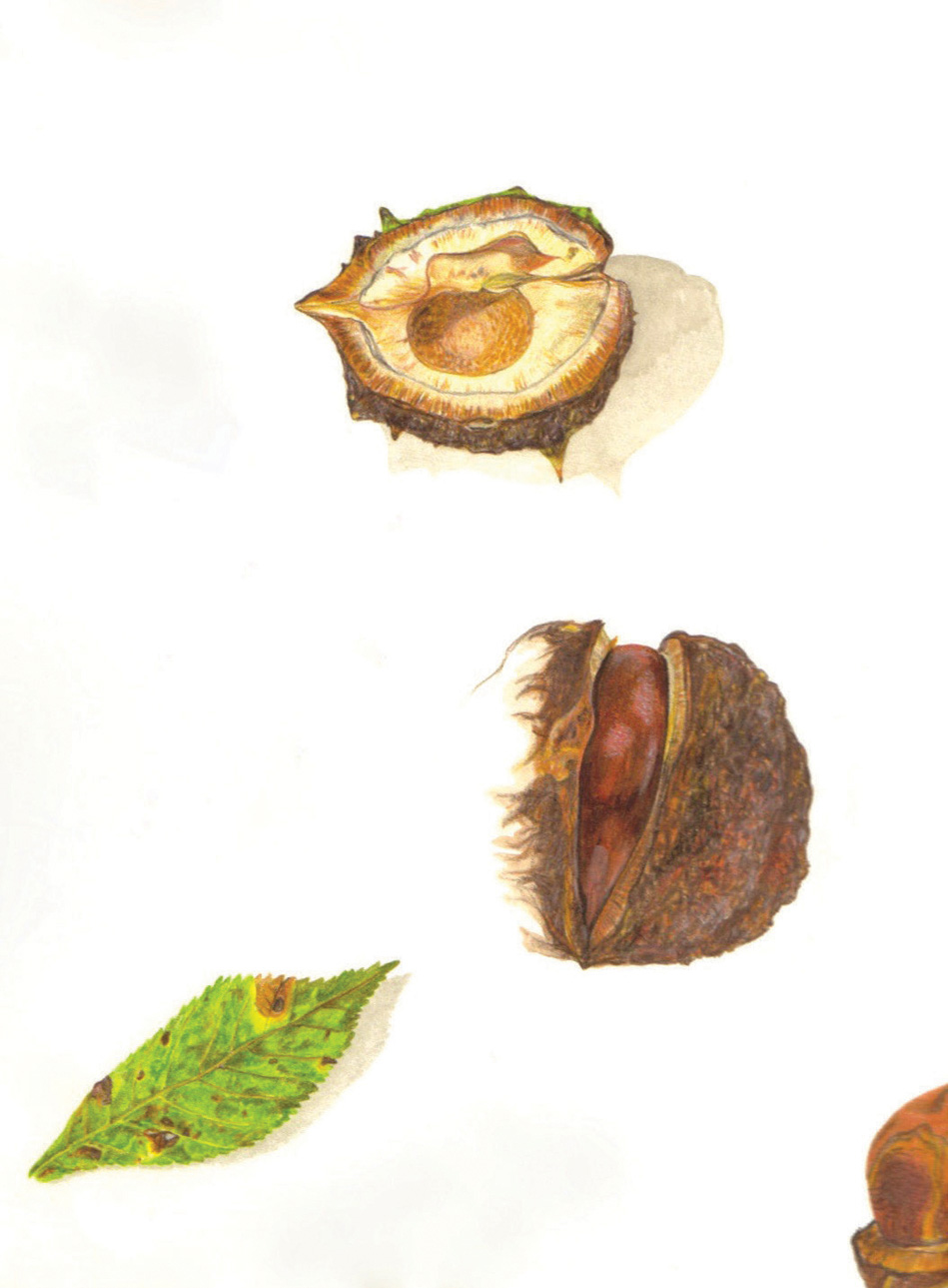
Field trip illustration, detail of the Horse Chestnut, Aesculus hippocastanum.
This was the instance when I was asked to draw a series of illustrations of the plants to be used as signage tiles in the Mediterranean biome. At the time of year I was offered that commission those particular flowers were coming towards the end of their bloom. The petals were beginning to fade, and their form was deteriorating, as one would expect. To overcome this common problem I always use an array of other resources, alongside as many of the actual living plants as I can gather.
Next page

